After World War II and the beginning of the cold war 1944 - 1965
In our second exposition room we see the rebuilding of Volkel after the hasty departure of the Luftwaffen by the RAF and RCAF, use by the Royal Marines and the return of the air forces. A number of other exibits are displayed among them ejection seats as well as some of the Squadron histories.
Volkel 1944-1945
The Royal Air Force (RAF) at Volkel
One of the main goals of Allied Operation Market Garden, which began on 17 September 1944 was to take controle of the roads and bridges from Eindhoven to Arnhem. To enable aerial ground support missions a number of airfields were built for the Second Allied Tactical Air Forces.
Just days after the Liberation RAF Squadrons and Royal Engineers descended on Volkel and started reconstruction of the runways. On September 30th the RAF 121 Wing arrived withHawker Typhoon fighter bombers. The Squadrons in 121 Wing in 1944 were 174 Sqn, 175 Sqn, 184 Sqn and 245 Sqn.
One day later RAF 122 Wing followed with 3 Sqn, 56 Sqn, and 486 Sqn. Later 80 Sqn and 274 Sqn 122 Wing at Volkel.
The Royal Canadian Air Force (RCAF) at Volkel
Half way through October more aircraft arrived at Volkel, this time the RCAF 126 Wing. The Canadian Wing was comprised of 401 Sqn,411 Sqn, 412 Sqn, 442 Sqn and all were flying the Supermarine Spitfire Mk IX fighter.
All these Wings were dependent on the RCAF 419 Repair and Salvage Unit for maintenance. This Squadron was stationed at Volkel from 1944 unti 1945.
The spring of 1945 saw the Allied ground forces advance in to Dutch occupied territory and the German heartland. The RAF and RCAF Wings followed stationing at airfields in Germany. Some stayed at Volkel until August 1945. These were the 136 Wing comprised of 418 Sqn, 605 Sqn and the Polish 305 Sqn, all flying the DeHaviland Mosquito.
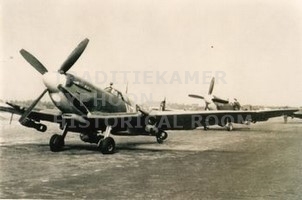
RCAF126 Wing Spitfires at the ready
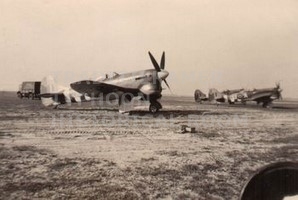
Three Hawker Tempest Mk V at Volkel B80
The invasion stripes still clearly visable
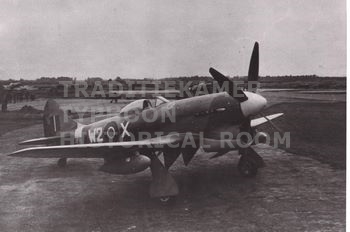
80 Sqn Tempest EJ 705, W2-X at the NE dispersal
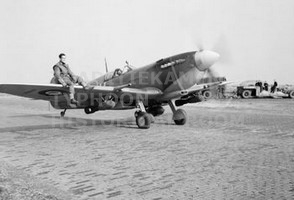
A Supermarine Spitfire Mk IXE of No. 412 Squadron RCAF,
27 October 1944
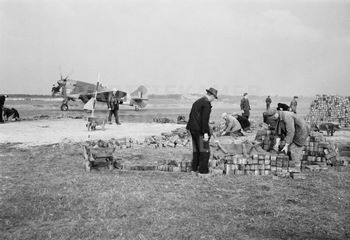
The local population assisted the RAF and RCAF
in making the airfield usable again
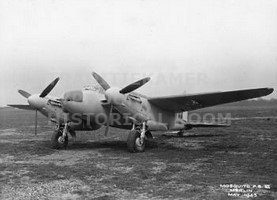
418 Sqm Mosquito
© IWM (ATP 12230G)
Royal Netherlands Marines at Volkel 1946 - 1950
After the cessation of hostilities and peace descended on Europe, Volkel became a training base for the Royal Marines. Here marines were trained for the missions to Netherlands India (Indonesia). To this day the large drill square on base carries the name "Mariniersplein", Marines Square.
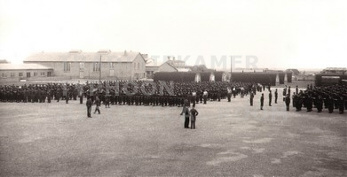
The preweekend inspection parade
-2-large-3.jpg)
Billiting in the Nissenhuts
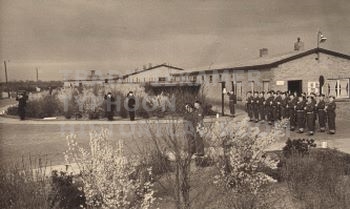
The Royal Marines departure and arrival of the Air Force
The Air Force at Volkel 1951 -
In 1951 the Air Arm returned to Volkel. In 1953 name was changed to Air Force and the prefix Royal was bestowed, the Royal Netherlands Air Force was a fact.
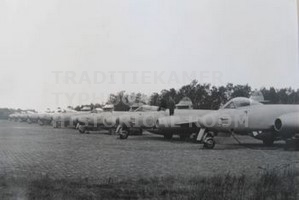
The first Dutch jetfighter
the Gloster Meteor
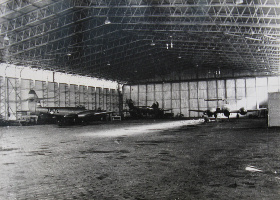
Infrastucture was expanded, here a new hangar for the jet fighters
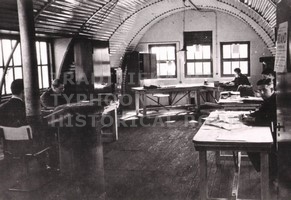
Where once Marines slept, the Air Force trained and worked
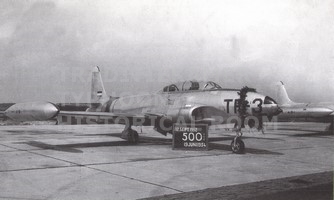
A 313 Sqn T33 Shooting Star or T-Bird trainer
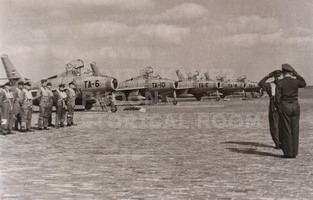
The Republic F-84F flight line
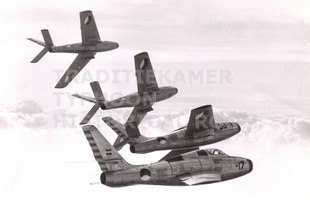
Formation of F-84F Thunderstreaks
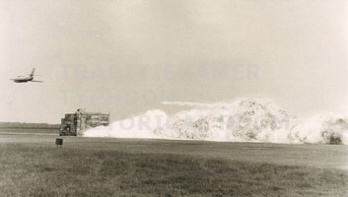
F-84F dropping napalm, on base!
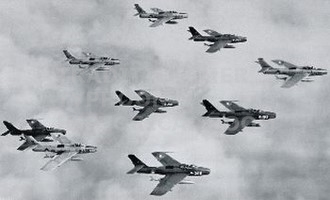
Formation of F-84F Thunderstreaks
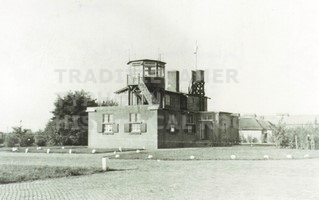
The ATC tower atop one of the German buildings that was noy destroyed